- JAPANESE
- LANGUAGE
X
 THAT IS GOOD
THAT IS GOOD
This is the final article of Katagiri’s Jomon series, which has been introduced in commemoration of the registration of the “Jomon Prehistoric Sites in Northern Japan” as a World Heritage Site.There are so many of Katagiri’s works related to the Jomon that I’d like to introduce them one by one, but we’ve only traveled a quarter of the way through this series. So I’ve decided to introduce the rest of the Jomon series all at once! Ta-da!
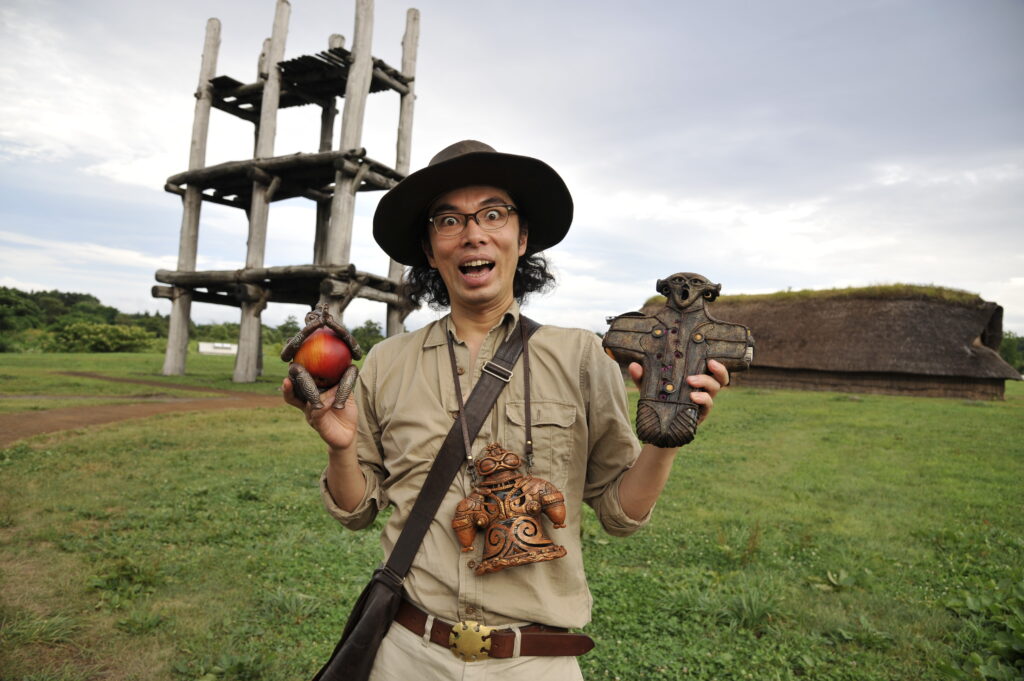
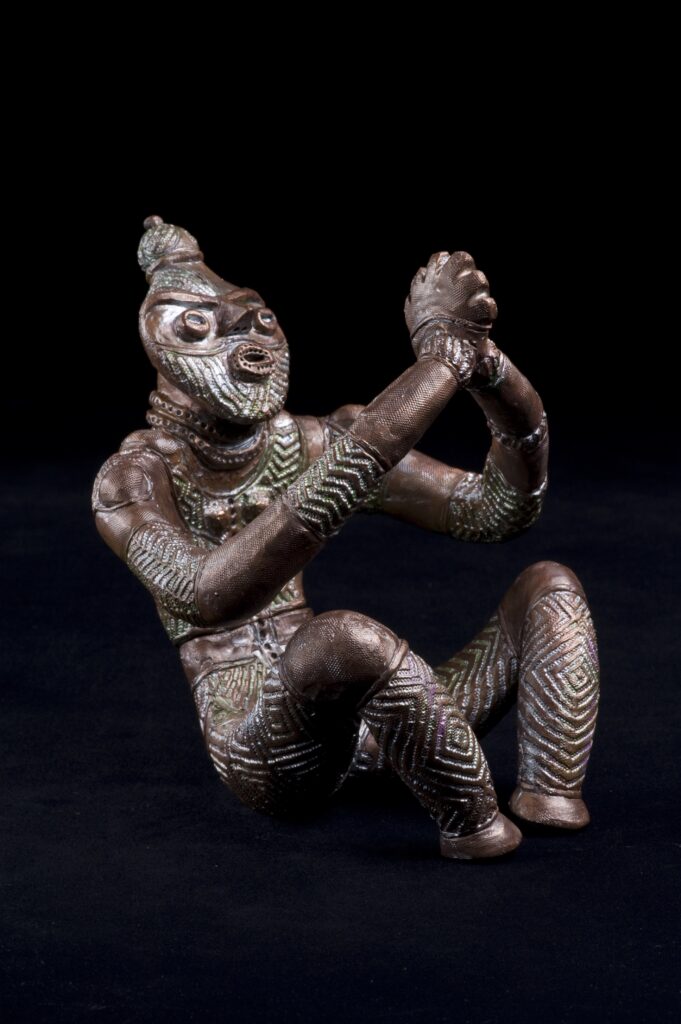
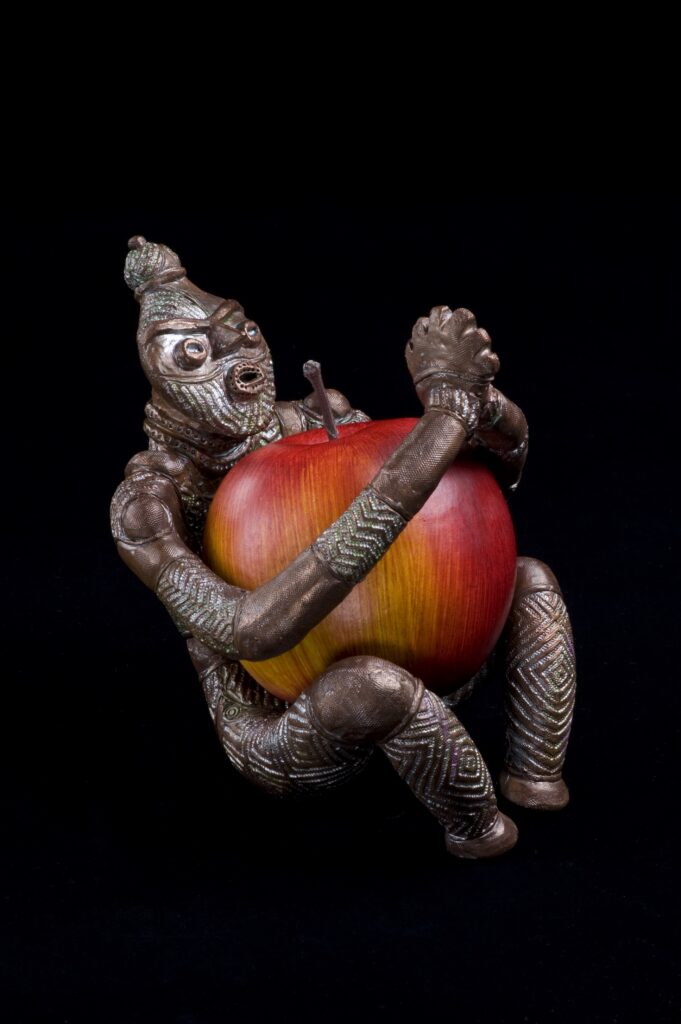
Legal amount : Length x Width x Depth=160×120×120(mm)
Materials: putty, sculpey, aluminum wire
I checked out the National Treasure “Gassho Dogu” (Joining the palms together clay figure) at the Korekawa Jomon Museum in Hachinohe. I was surprised to see a room dedicated just for the Gassho Dogu, even though there were many other exhibits in the museum. “Being a national treasure is an amazing thing, the value!”
However, compared to the Shakouki Dogu, it is not so alien-like, and I felt that this position was the identity of the Gassho Dogu, so I thought it would be confusing if I rearranged it, so I reproduced the silhouette almost as it was. However, I wanted to give it an Aomori feel, so I let it hold an apple.
However, when you actually make it, it is also very deep… The difference between the parts with Jomon and the parts without Jomon, such as the legs and thighs, and the shape of the face, which is similar to Hakodate’s “Hollow Clay Figure”. It’s difficult to create something so flat… I used brown for the apple to make it stand out, and inked it with metallic ink to give it a cosmic feel. It was difficult and fun.

H190×W142×D152(mm)
The late jomon period (B.C.2000~B.C.1000)
H190×W142×D152(mm)
Excavated the Kazahari 1 Site, Aomori city, Aomori Prefecture
Became National Treasure on 19 March 2009.
This clay figurine is called “Gassho Dogu” because of the way it sits with its knees up and its hands clasped in front of its chest. It was found in a pit dwelling with the right side down and the front facing the center of the dwelling, with the left foot missing. Later, the left foot part was excavated from 2.5 meters away. In general, clay figurines are often unearthed from dumping grounds or outside the remains, but there are very few cases where they are found in a corner of a house. In addition, asphalt was found on the broken left foot, suggesting that the clay figurine may have been a broken object that was repaired and cherished.
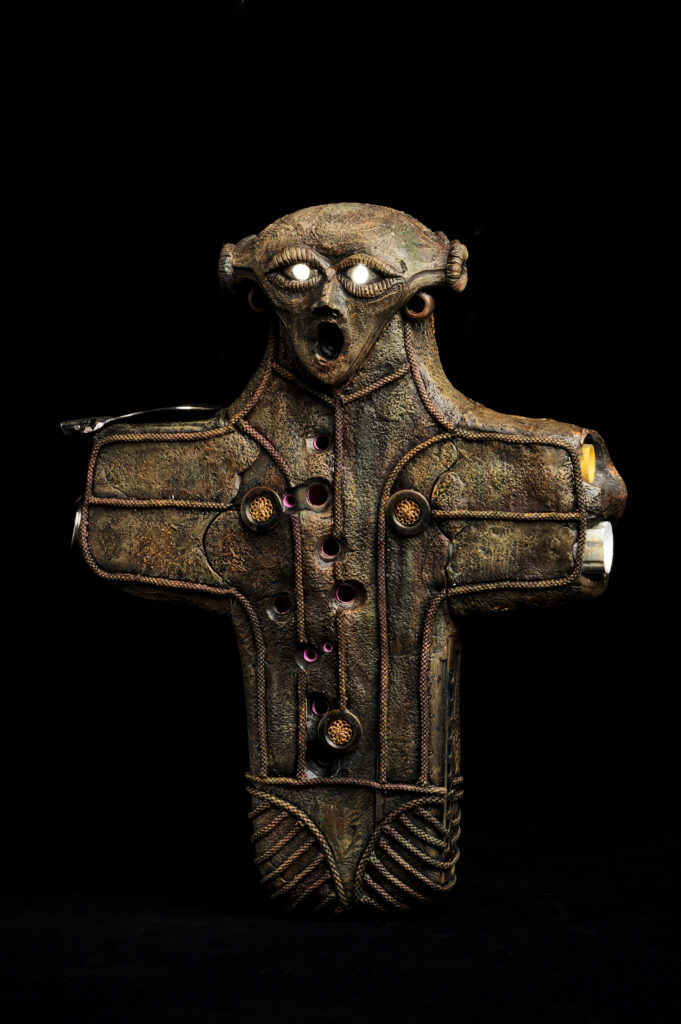
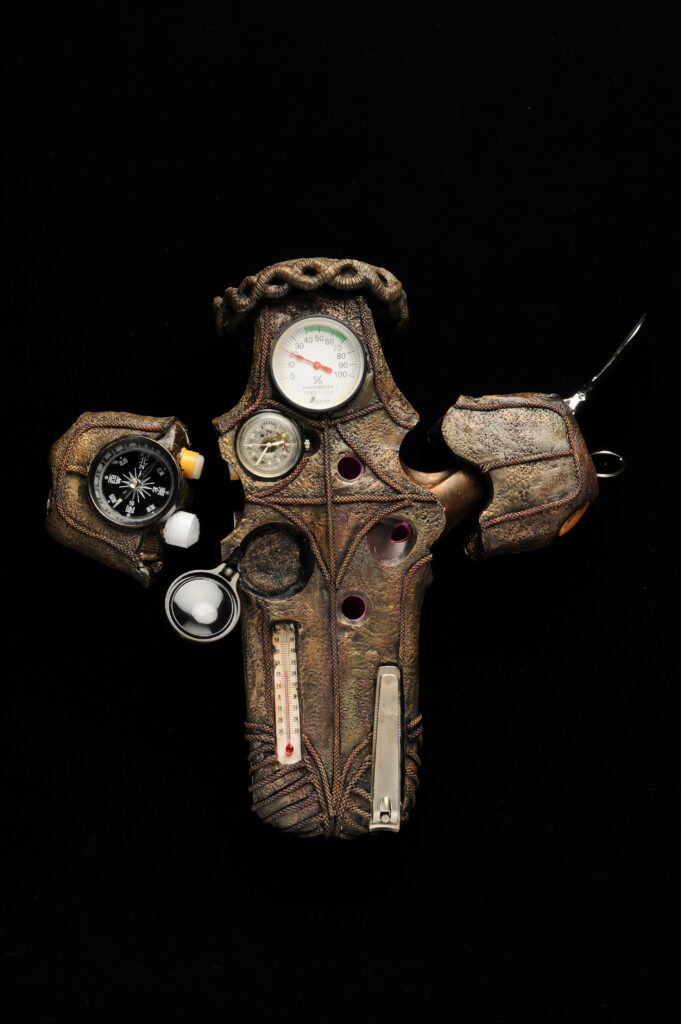
Legal amount : Length x Width x Depth=280×220×45(mm)
Materials: Putty, styrofoam, glass, iron, acrylic
This is the last work in the “Aomori Dogu Trilogy” (“Pet bottle in Dogu”, “DOGU with Palms Together Second Season”, and “Ten Convenient Dogu”).
The “Banjo Dogu” (also called “Cruciform Dogu”) excavated at the Sannai-Maruyama Site was so flat and plain that I felt it was too simple (actually, it was designed to be easy to make into goods). I made it with a lot of useless and convenient features, and my oldest son Taro, who was in the first grade at the time, kept saying, “That’s cool!”
I think the fact that it contains ten different useful functions (ocarina, harmonica, directional magnet, lipstick, glue stick, loupe, light, clock, thermometer, hygrometer, shoehorn, security buzzer, nail clippers, and more than ten others…) won the hearts of elementary school boys. The ocarina and harmonica side by side made it surprisingly big.
I like the design of the flat clay figurine wearing pants and the silhouette of the cross. It was very well made. Perhaps the coloring should have been a little more inspired by the ten different functions.
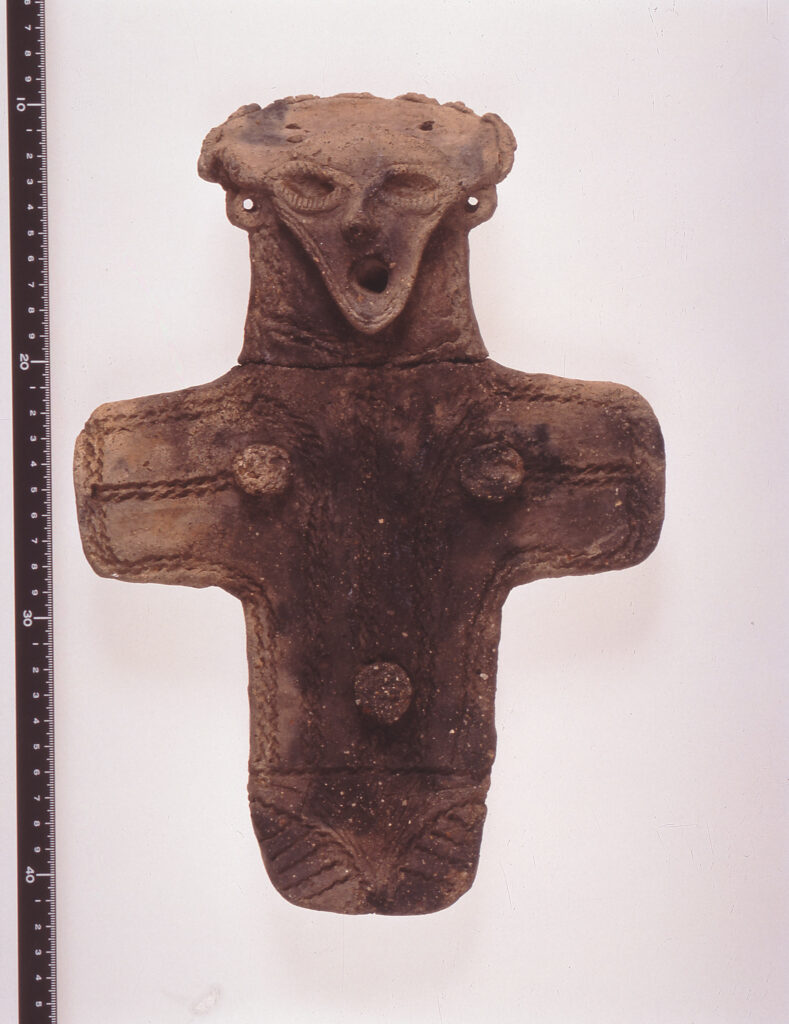
The middle period of the Jomon era (B.C. 3000~ B.C. 2000)
H320(mm)
Excavation: Sannai Maruyama Site, Aomori city, Aomori Pref
At the beginning of the mid-Jomon period, when standing clay figurines and poseable clay figurines were born, clay figurines with the lineage of plate-shaped clay figurines were traditionally made in the northern Tohoku region. More than 1,700 clay figurines, including flat and cross-shaped clay figurines, have been excavated from the Sannai Maruyama Site.
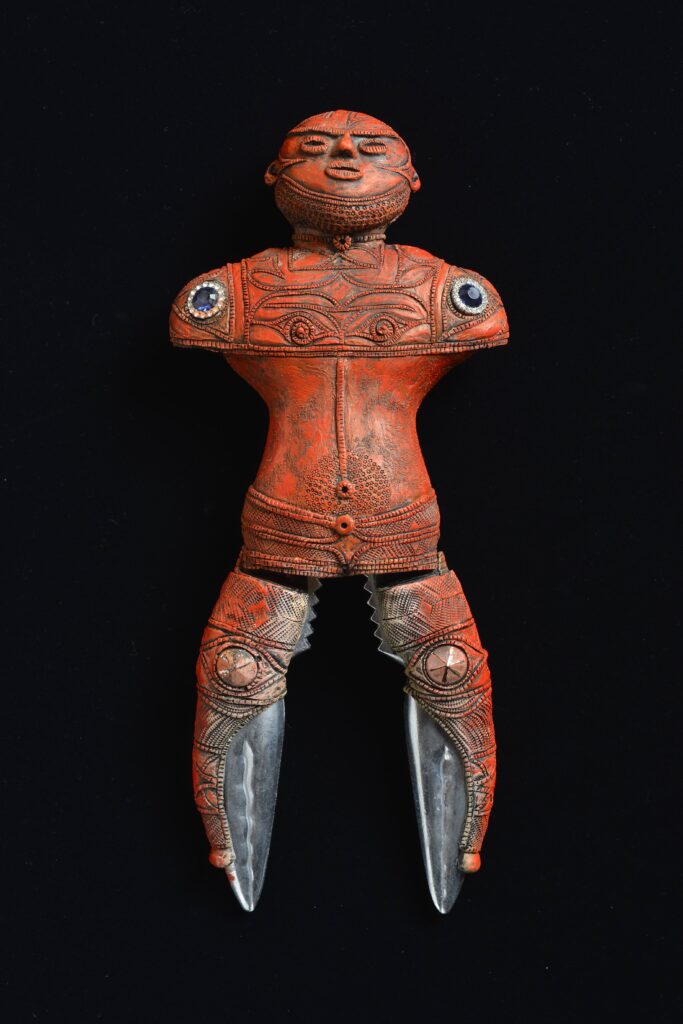
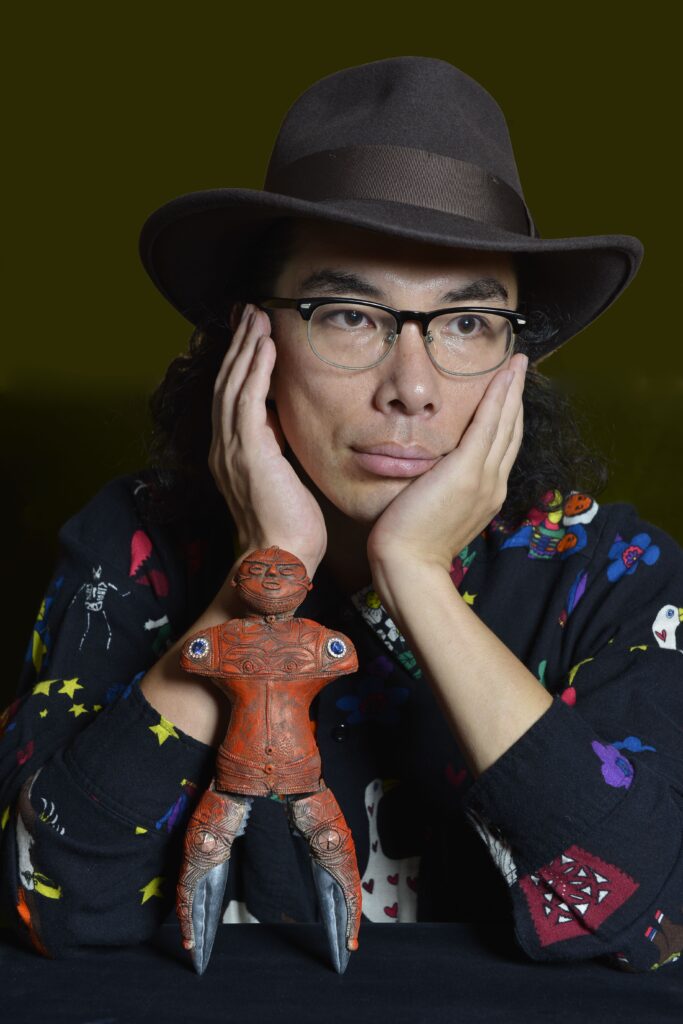
Legal amount : Length x Width x Depth=250×100×40(mm)
Materials: putty, sculpey, sapphire
On my way back from Sapporo Parco, where the Giri exhibition was held, I dropped by the Hokkaido Government Office to see a replica of the “Hollow Clay Figure”. I was immediately struck by its high degree of perfection, its thickness, and its masculinity (I heard it was based on a female motif). “I had no choice but to make it during the exhibition”. I started to work on it, but it was hard to trace the lines that looked a bit like Ainu patterns as accurately as possible. I realized that even in the Jomon period, the Japanese were very particular about their craftsmanship. The face was a great challenge to make.
The “crab cracker” placed on the lower half of my body has been in my house for a long time, but I never used it, so I thought it was a good memorial service. There’s no one in Hokkaido who eats crab using this, is there? The color is reddish to resemble crabs.
I like the name of the work, “Cho Kani Kuu Dogu(in Japanese),” which is a forced vocab of “Hollow Clay Figurine”.
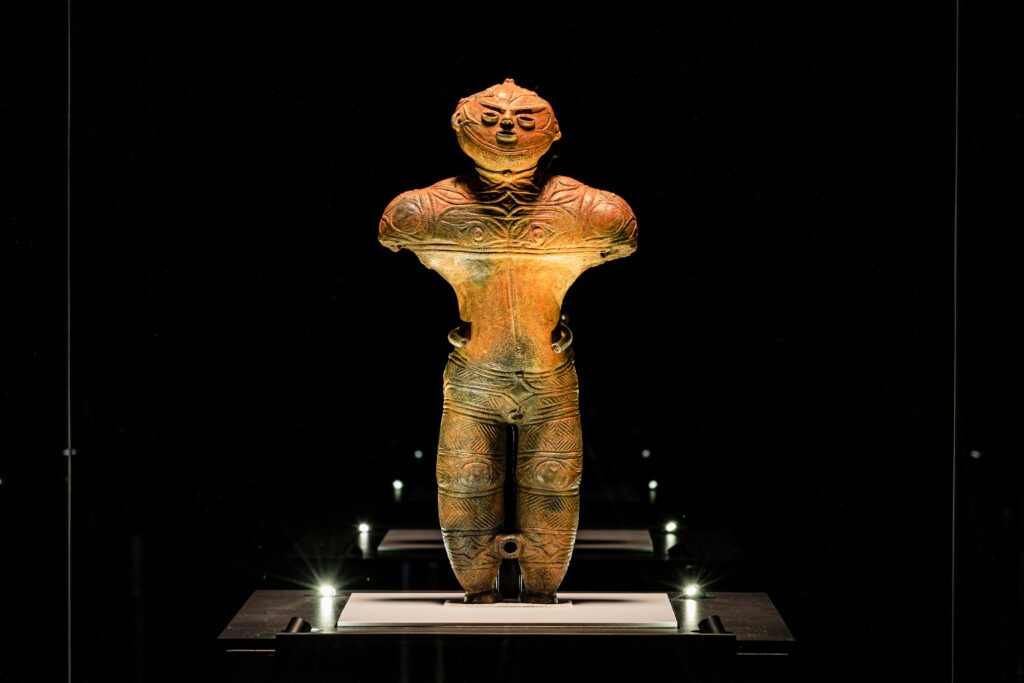
The late Jomon period (B.C.2000~B.C.1000)
H415(mm)
The late Jomon period (B.C.2000~B.C.1000)
Excavated from Chobonaino Site, Hakodate, Hokkaido
Became national treasure in 2007
This clay figurine from the late Jomon period was discovered in 1975 in the former Minami Kayabe town of Hakodate.It is said to be the only national treasure in Hokkaido and is on permanent display at the Hakodate Jomon Culture Center in Hakodate.It is one of the largest “hollow clay figurines” in Japan with a hollow interior, and is characterized by its elaborate construction, being only a few millimeters thick at its thinnest point.It is said to be nicknamed “Kakku,” from the “kaya” of the Minamikayabe area where it was excavated and the “kuu” of the hollow.
The whole body is decorated with delicate geometric patterns composed of circles and triangles, and the figure is characterized by a mixture of feminine expressions such as plump forms and stretch marks, and masculine expressions such as beards and eyebrows.
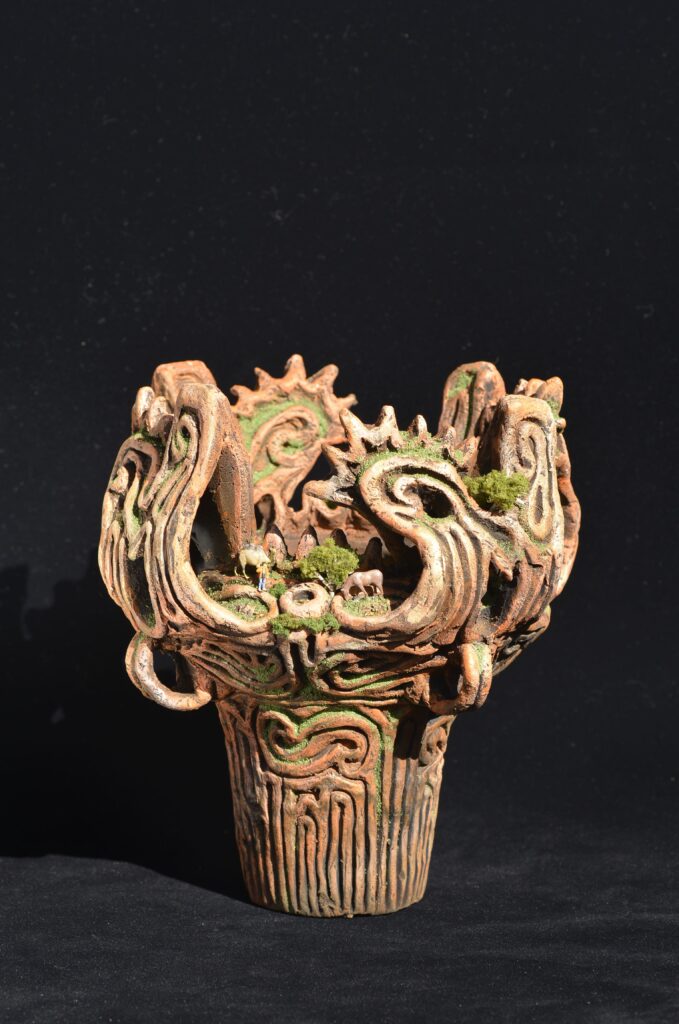
Legal amount : Length x Width x Depth=235×215×215(mm)
Materials: Pottery clay, Scenery powder
I made this with the help of a master pottery maker at the Umataka Jomon Museum in Niigata Prefecture, which I visited as part of a TV program to produce my own trip. There is an important cultural asset, Jomon Vessel with Flame-like Ornamentation, very close by, so it was a very luxurious experience for me to be able to visit it every now and then and make it! When I looked at the real flaming earthenware after completion, it looked completely different from the first time I saw it!
In short, I thought I was observing carefully, but I didn’t see the “depth of the swell” until I made it. I’ve never experienced anything like that.
When I brought it home, I realized that to show off its delicate construction, it was a diorama of a very ancient civilization! I used scenery powder and other materials to attach moss and plants to it, and there are animals on top.” The scale of Jomon pottery” is like this, I think. It’s like the culmination of Japanese craftsmanship.

The middle period of the Jomon era (B.C. 3000~ B.C. 2000)
Height 350mm, Mouth diameter 280mm, Carcass diameter 200mm, Weight 5155g
Excavated : Nokubi Site, Toka machi city, Niigata Prefecture
Jomon Vessel with Flame-like Ornamentation was made about 5,000 years ago, in the middle of the Jomon period, and was named “Jomon Vessel with Flame-like Ornamentation” because its large protrusions look like burning flames. It is a style of earthenware that flourished around the middle of the Jomon period in what is now Niigata Prefecture. It has four projections called chicken head crown projections on the mouth edge of the flat rim, and small serrated protrusions between the protrusions.
It is estimated that this unique shape and pattern was established in the middle reaches of the Shinano River around 3,300 B. C. under the influence of pottery styles from neighboring regions, and continued and developed in the same region.
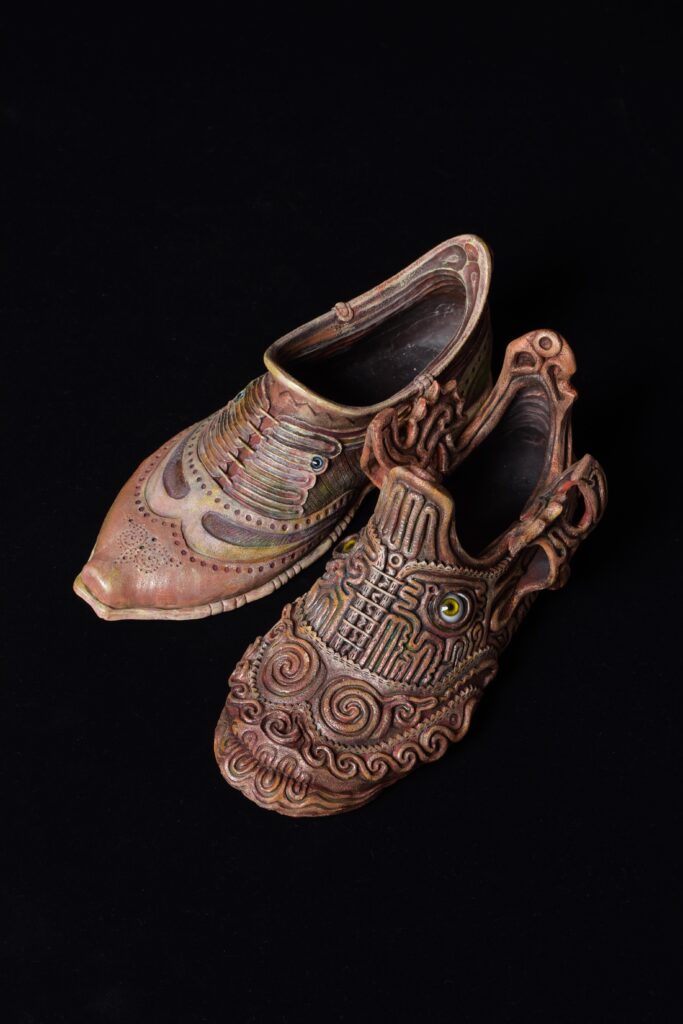
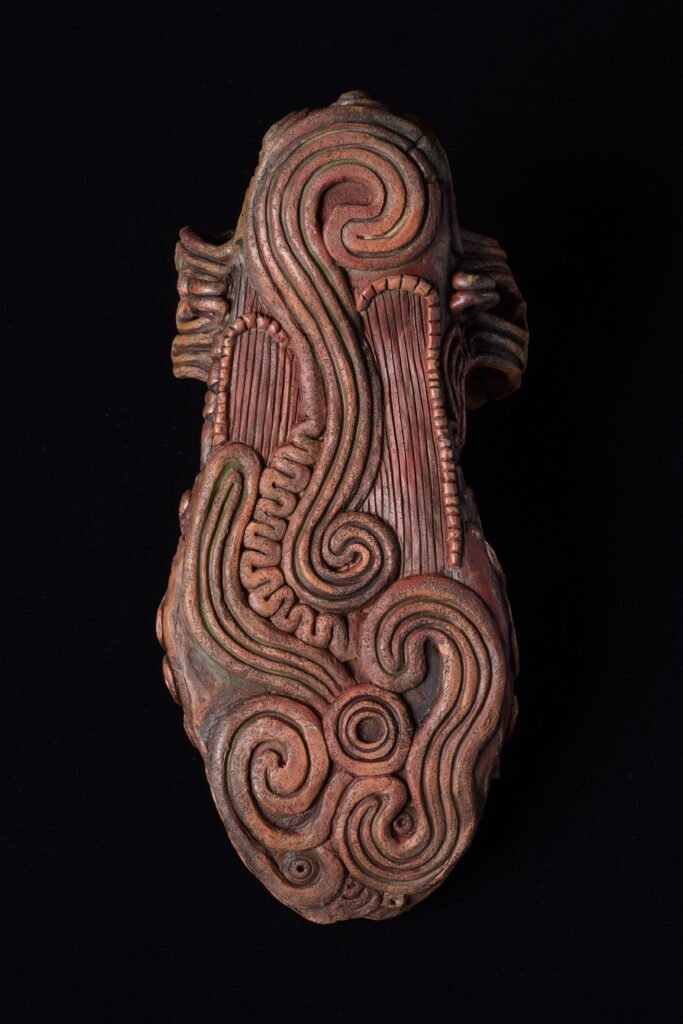
Jomon Shoes Legal amount : Length x Width x Depth=290×120×150(mm)
Yayoi Shoes Legal amount : Length x Width x Depth=290×120×120(mm)
Material: Epoxy putty, sculpey, solder wire
I collaborated with Takayuki Takeya, the sculptor known for “Shin Godzilla” and “Zeiram”, to create an original figure called “Jomon Kugutsu (Puppet)”. Since it is called a ” kugutsu”, I decided to make it into a “Kutsu (shoe)”.It was right after I appeared on NHK’s Jomon program in Nagaoka, so my Jomon fever was rekindled, and I like the way it looks with the crown pottery on the front and back, the Jomon Vessel with Flame-like Ornamentation on the left and right, and the swirling water-flame patterned pot on the sole.
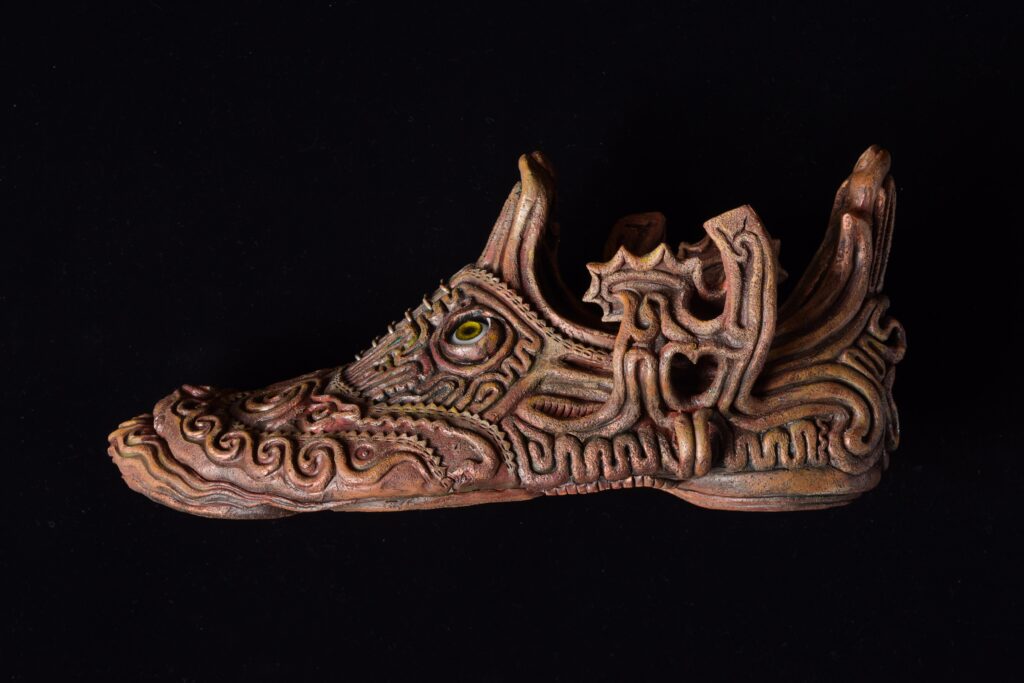
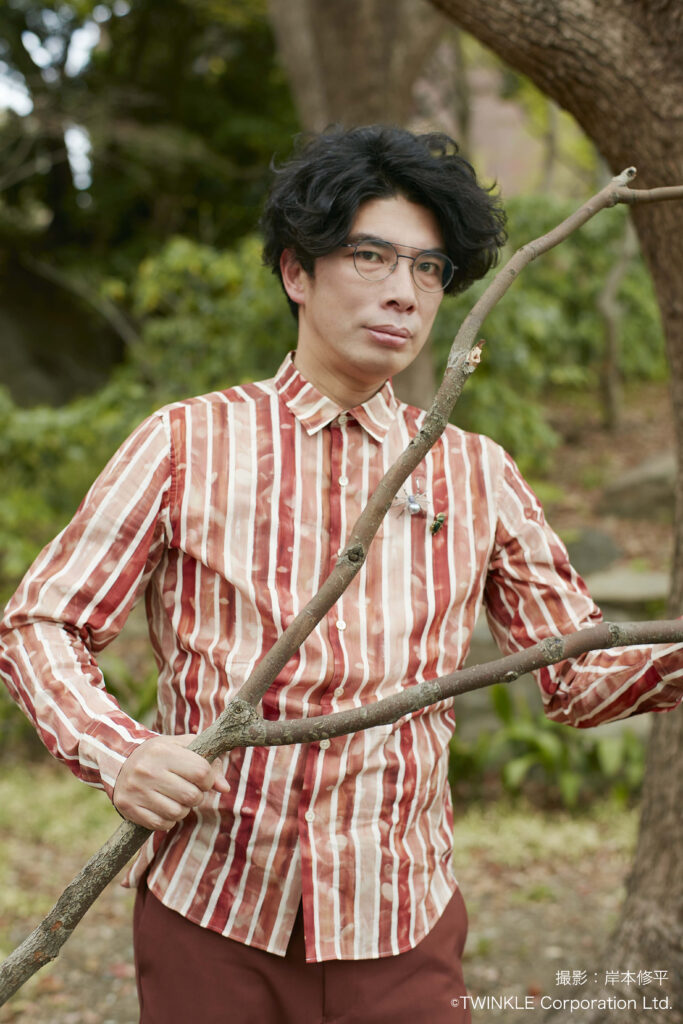
Jin Katagiri
Born November 27, 1973 / Born in Saitama Prefecture / Graduated from Tama Art University
Active in the stage, movies, radio, etc., mainly in TV dramas series. Major appearances in recent years include “99.9% -Criminal Lawyer-” (TBS), “Your Turn to Kill” (NTV), and “NHK Morning drama series Yell” (NHK).
In addition to acting, he also creates clay, and from 2016 to 2018 he held a national tour at the “Jin Katagiri Absurdity Clay Art Exhibit Giri Ten.” In 2019, he is holding his first overseas solo exhibition in Taiwan.
・JOMON: 10,000 Years of Prehistoric Art in Japan
・Hachinohe city official Home Page
・Jomon Japan
・ Travel Hakodate
Many unique Jomon pottery and clay figurines have been unearthed all over Japan, including the Jomon Prehistoric Sites in Northern Japan, which have been registered as World Heritage sites. At the time, these clay figurines were probably made as tools for prayer, but Katagiri’s “clay figurines for eating crabs” and “clay figurines with useful tools” are probably the same as Jomon clay figurines in that they have a purpose. Huh? So what is the purpose of the modeling of flame-shaped earthenware? ? I was stuck in a loop of “?”.Perhaps the appeal of Jomon pottery and clay figurines lies in the fact that the facts are indeterminate, so we can freely imagine and enjoy them.
Explanation of Jomon vessel, DOGU and Afterwords : THAT IS GOOD editorial department, Fujita